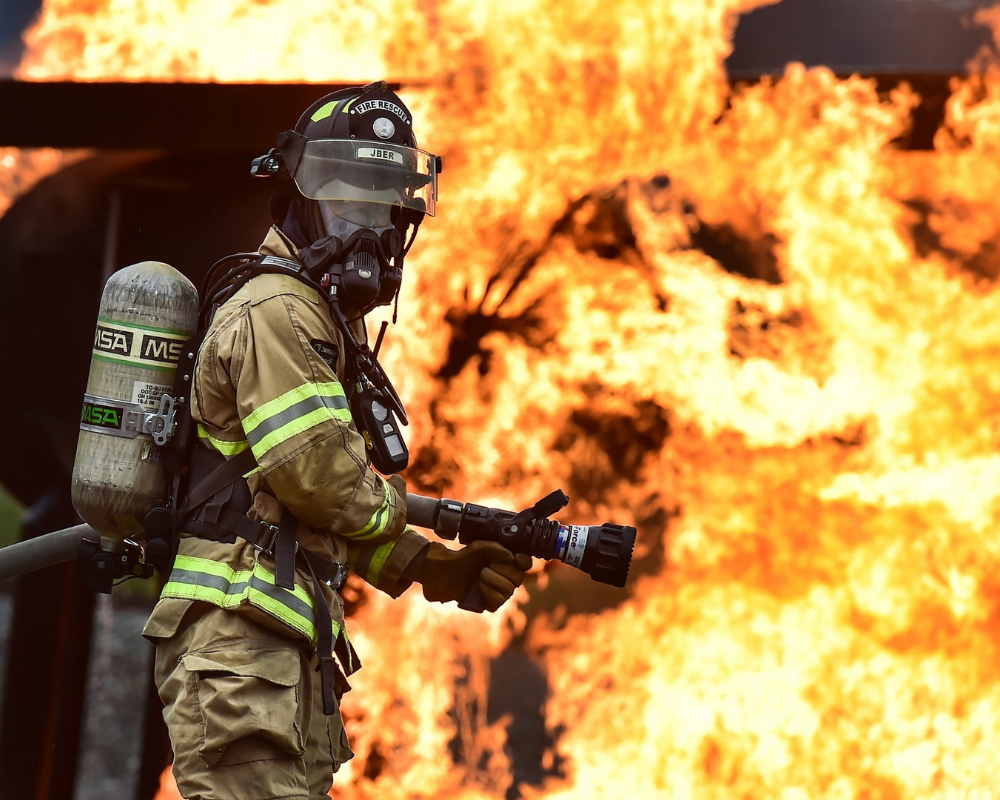FR or AR: What’s the difference?

The difference between flame resistant (FR) and arc flash or arc rated (AR) clothing is clear, but many professionals make the mistake of choosing FR clothing with the assumption that they will be safe should a fire occur. Both arc flash and FR clothing aim to protect workers from burn injuries relating to open flames, sparks, and other possible fire hazards. Each follows different standards and classifications on the different levels of protection they provide.
FR clothing is made of materials that naturally resist burning, melting or ignition while helping to insulate against heat. AR clothing should be worn when working near electrical equipment or anywhere arc flash hazards can occur. The garments should come with an official arc flash rating on the tag. This shows the wearer that the clothing has been properly tested against the hazard in question.
It’s important to remember that all arc flash clothing is flame resistant, but not all flame resistant clothing qualifies as arc flash. While FR clothing may protect the wearer from potential fire hazards, these materials typically don’t reach the same threshold of protection as AR clothing. Let’s explore this crucial, yet often overlooked, aspect of workplace safety.
Flame-Resistant (FR) clothing then vs. now
Some FR pieces of clothing do a reasonable job of protecting the wearer from burns, but others can go up in flames in a matter of minutes. The discrepancy started in the 1950s when there were only two types of fabric, flame-resistant and non-flame resistant. FR clothing was made with treated cotton or aramids, while non-FR clothing was made with ordinary cotton. Treated fabrics are designed to repel the spread of fire, thus protecting the wearer from first, second, or third-degree burns.
However, companies started cheating the FR test with cheaper materials that would melt when exposed to extreme heat. This created a great deal of confusion among those that relied on these materials and some companies sold non-FR clothing with the promise of protection by mistake.
In some ways, non-FR clothing can be worse than wearing nothing at all. If the clothing inflames, it will melt onto the wearer’s skin, which increases their chance of internal injury, including permanent damage to their heart, skin, and lungs.
While FR clothing can reduce the chances of ignition and protect workers against the spread of fire, some fabrics with this label do not. It wasn’t until the 1990s that FR fabrics were exposed to more rigorous tests, now referred to as the arc flash rating.
Testing, rating standards, and classifications on arc flash clothing
AR clothing is tested beyond that of FR clothing, into transmission of the heat. Any piece of clothing with the arc flash rating will provide some level of protection should an arc flash fire occur. There are several rating standards for arc flash or arc-rated clothing, including: ASTM F1506, ASTM F1959, IEC 61482-2, IEC 61482-1-1 Method A, and IEC 61482-1-1 Method B.
According to ASTM F1959, at least 20 samples of the clothing must be tested during the rating process to ensure the clothing performs consistently when exposed to heat and fire.
During the test, sensors are used to measure heat levels running through the fabric based on the Stoll Curve, which determines the level of heat needed to create a second-degree burn. The test is used to calculate at what point there is a 50% possibility of the wearer experiencing the onset of a second-degree burn. If holes open in the fabric before the 50% probability threshold is reached, the Energy Break-Open Threshold (EBT) is calculated, expressed in calories per centimeter squared. This is what’s known as the arc rating of the fabric. It can be displayed as ATPV (Arc Thermal Performance Value) or EBT. Both can be calculated during the same test, but the more conservative rating is used.
There are four arc flash ratings. Category 1 comes with a minimum arc rating of 4 cal/cm2. It involves a single layer of arc flash clothing. Category 2 comes with a minimum rating of 8 cal/cm2. It feels about the same as Category 1 with more protection, so many companies usually opt for Category 2.
Categories 3 and 4 require additional layers. Category 3 comes with a minimum rating of 25 cal/cm2. It is usually worn by firefighters and includes an arc-rated flash hood, insulating gloves, and additional PPE. Category 4 comes with a minimum rating of 40 cal/cm2.
In most cases, workers should be fitted with a level 2 arc flash rating at minimum. This will protect workers in most situations with a threat of flash fire. Professionals working in or around areas that are prone to flash fires may want to consider upgrading to Category 3 or 4 workwear.
Companies should look for arc flash clothing with the UL classification, which stands for Underwriters Laboratories, a global safety gear inspection organization. These products have been thoroughly inspected by a team of experts to make sure they live up to the wearer’s expectations. It’s always important to find safety information that’s been validated by a third party.
Flame resistant clothing tends to be less expensive than its arc flash alternative. Some companies may try to save money by swapping out arc flash clothing for less reliable gear. Workers and managers should avoid low-cost products from unfamiliar retailers to stay safe on the job.
Nothing could be more important than protecting workers from these kinds of fire and arc flash threats. Make sure every piece of clothing comes with arc flash ratings before entering a potentially hazardous area. Every company and employee should know the difference between the two and when to use one over the other.
Looking for a reprint of this article?
From high-res PDFs to custom plaques, order your copy today!









